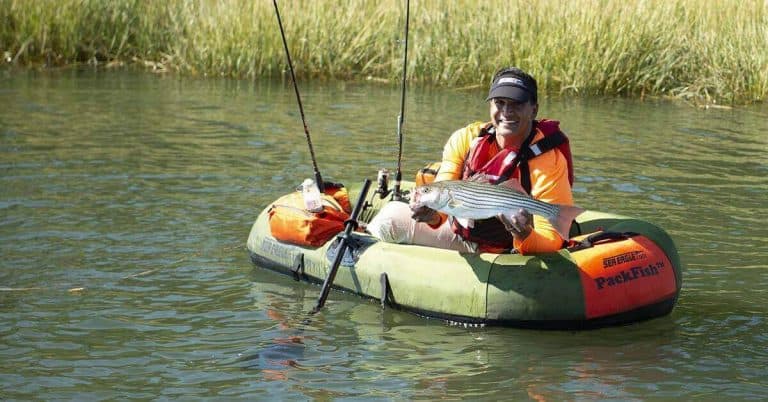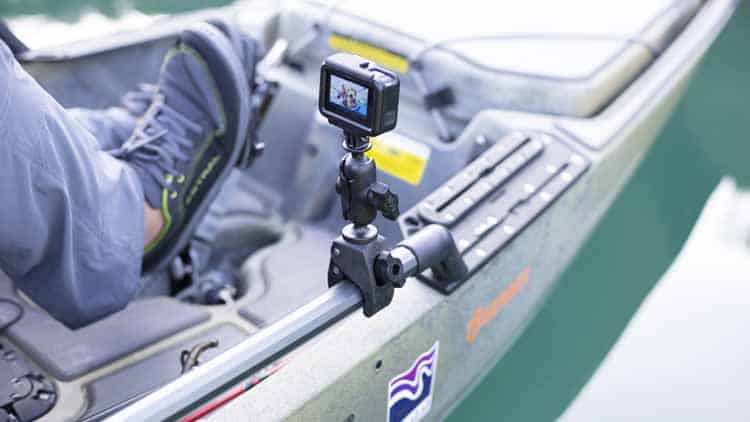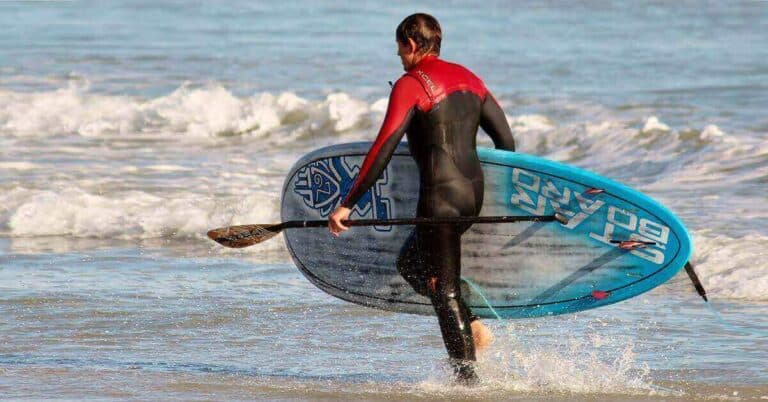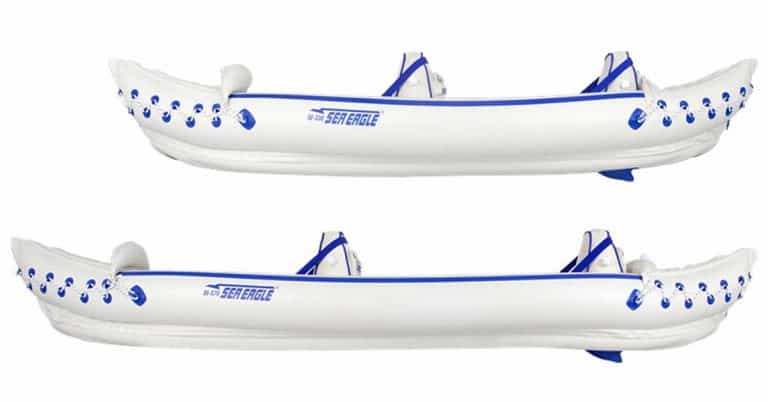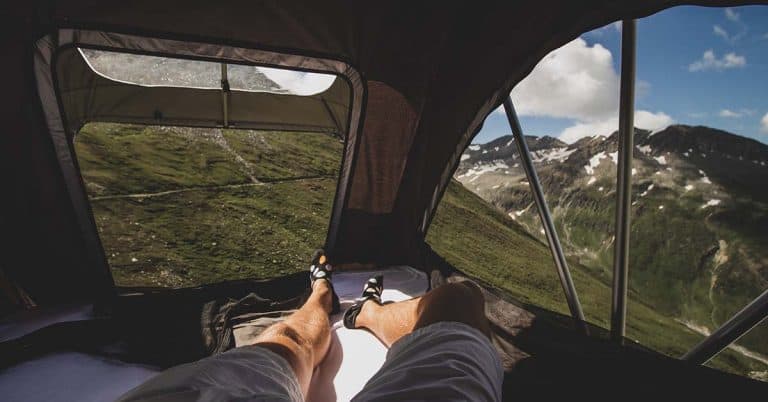Disclosure: I am compensated for purchases made through some links on this site. Click for details.
Safety whistles, emergency whistles, survival whistles. Call them whatever you want. Outdoor emergency preparedness isn’t complete without a safety whistle. A whistle can be an essential tool that saves lives in times of crisis when you use three standardized whistle communication signals.
But what constitutes a safety whistle and which type of whistle is best for your favorite outdoor activities?
What Is a Safety Whistle?
A safety whistle is a small, rugged, crazy loud whistle used to get the attention of others or for gaining help from others in your vicinity during a time of crisis. They are also known as emergency whistles and survival whistles.
Safety whistles are used in emergency preparedness for disasters or when someone is in danger or distress. They are in outdoor survival kits, paddling safety kits, earthquake kits, hurricane kits, 72-hour kits, and more. Safety whistles are even carried on keychains for personal safety.
You get the point. They are an essential survival tool.
Related Content:
- Boating Safety Basics For Paddle Boaters
- Canoe & Kayak Safety Equipment Checklist
- Fishing Float Tube Safety Guide
When Would You Use a Safety Whistle?
If you find yourself in an emergency situation or facing potential danger, use your safety whistle to gain help from anyone nearby. In many situations, it will be your first choice for survival.
You Should Use a Safety Whistle When You Need To:
- Establish location if separated from your group
- Attract help if you are lost, injured, or in need of help
- Scare off wildlife
- Alert other boaters of your presence on the water
- Scare off an attacker
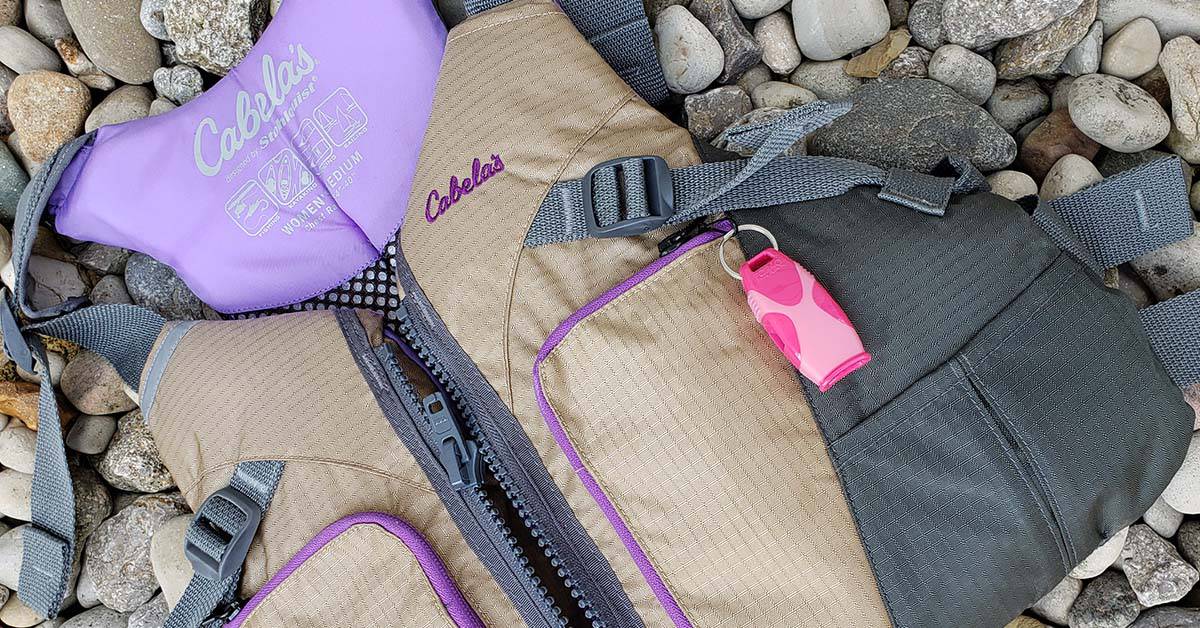
Are Metal or Plastic Safety Whistles Better?
Although safety whistles are made from a variety of materials like stainless steel, aluminum, steel, and titanium, plastic whistles are best. Plastic safety whistles are inexpensive, lightweight, virtually indestructible, won’t rust or corrode, and won’t freeze to your lips in cold weather.
Plastic whistles are also easier on your mouth and teeth. Some even have cushioned mouth grips.
Plastic safety whistles are often orange (a standard safety color) but they are also made in a variety of other fun colors. Whichever color you opt for pick a color with high visibility.
Your emergency whistle should also be pealess.
Safety Whistle Types
There are three common safety whistle types: electronic whistles, pea whistles, and pealess whistles.
Electronic Whistles
Pros
- Electronic whistles provide a loud, consistent sound when activated by the push of a button.
- Electronic whistles are hygienic for multi-operator use. They aren’t going in someone’s mouth.
- The operator is free to operate the electronic whistle and verbally communicate at the same time.
Cons
- Electronic whistles can be activated accidentally.
- Electronic whistles run on batteries that can fail.
- Not all electronic whistles are waterproof.
- A redundant backup like a pealess whistle is required in case of failure.
- Electronic whistles do not meet the safety requirements for International Standards ISO 12402-8:2020, category Personal Flotation Devices – Accessories with regard to the technical provisions of the International Convention for the Safety of Life at Sea (SOLAS). The safety standard for whistles is a device that, when blown by mouth, produces an audible sound that can aid in the location of the user.
Pea Whistles
My first whistle as a kid was a shiny, metal pea whistle. I still have the whistle! Maybe you had a pea whistle too?
The “pea” in the main chamber of this type of whistle is typically a little ball made of cork. You can see it rattle around if you shake it.
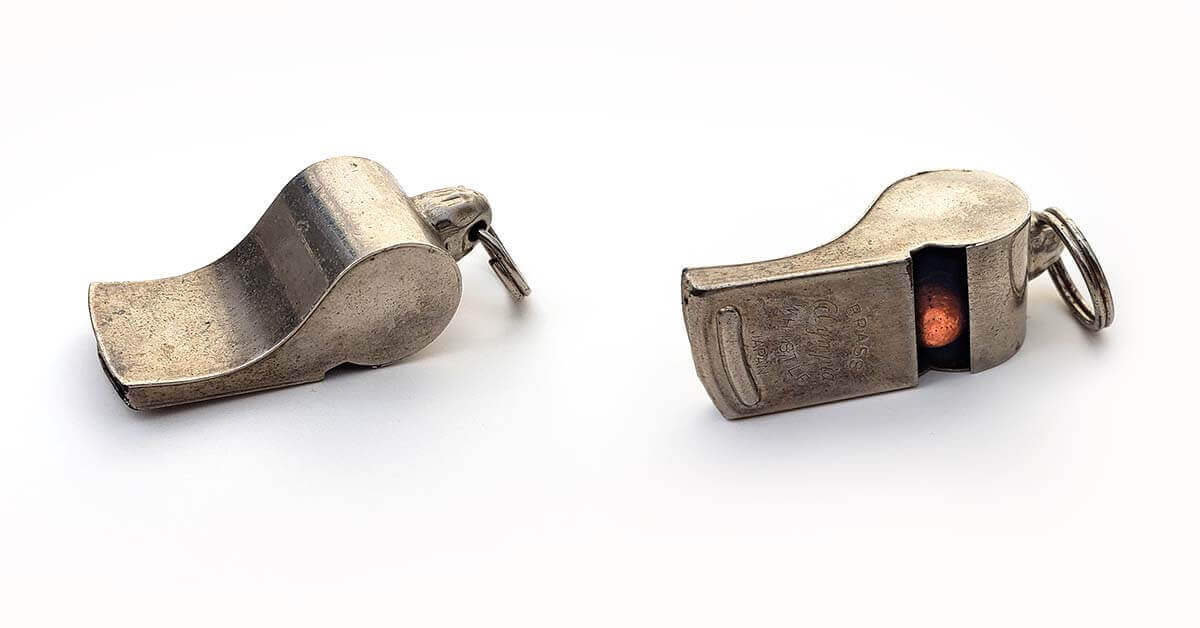
Pea whistles are popular with referees, bandleaders, and dog trailers and for good reason, they can produce a very loud whistle that can carry a mile and were the superior whistle design from 1883 until Ron Foxcroft released the first Fox 40 pealess whistle in 1987.
There are, however, some downsides to pea whistles for use as a safety whistle.
Pea whistles can stop working if they get wet, freeze, get dirt or muck inside, or the pea can get jammed if blown too hard in a panic. Now when I say wet, I mean that your spit can even cause a decrease in performance. Moisture also causes the cork pea to deteriorate over time.
Also, the pea in these whistles rattle, another downside for many outdoor enthusiasts who might want to be quiet out in the woods while nature watching or hunting.
Pealess Whistles
Modern whistles do not have balls inside. In 1987, whistles were changed forever when Ron Foxcroft created the Fox 40 pealess whistle. Through perseverance, Foxcroft developed a revolutionary product that produces a loud, piercing whistle without a pea spinning around or other moving parts.
When you do something right, it catches on fast. Fox 40 whistles are used by referees, coaches, water safety, outdoors enthusiasts, personal security, and rescue professionals worldwide!
And when you do something right others follow in your lead. Today, there are many different pealess whistle manufacturers.
Other than some pealess whistles being nicer than others, I don’t know any cons for this type whistle.
Pros for the Use of Pealess Whistles:
- Easy to blow.
- Can be heard up to a mile away.
- Consistent and reliable performance.
- Can not be overblown if you force a lot of air through in a panic situation.
- Its chambers self-clear after being submerged in water.
- No moving parts to jam, deteriorate, or freeze in cold weather.
- Fox 40 pealess whistles meet the safety requirements for International Standards ISO 12402-8:2020, category Personal Flotation Devices – Accessories with regard to the technical provisions of the International Convention for the Safety of Life at Sea (SOLAS).
- Fox 40 pealess whistles are an approved and recommended audible signaling device for Coast Guards worldwide.
Additional Reasons to Like Fox 40 Pealess Whistles
Durability
Fox 40 whistles are made from injection-molded, high-impact, ABS plastic parts that are ultrasonically welded together. Welding plastic together is stronger than glue and won’t deteriorate over time.
These exceptionally made whistles can handle abuse and environments with extreme temperatures.
Easy to Clean
Fox 40 recommends regular cleaning with a water and vinegar solution. I do clean some things this way. The solution I mix is 3 parts water and 1 part distilled white vinegar.
Vinegar, however, does not kill 99.9 percent of germs.
I prefer to soak my whistles for 30 minutes in Listerine then rinse and let air dry. Listerine will kill those nasty germs. And I mean nasty! I’ve seen some gross shit in rivers. Literally…
Like this portable toilet on a riverbank after a flood. Guess where the contents went.

If you need to scrub some dirt off your plastic, pealess whistle when cleaning, a small soft bristle toothbrush works well.
BPA-Free, Latex-Free, and No Glue
Fox 40 whistles are free of Bisphenol A (BPA) and their mouthguards are latex-free. They don’t use glue either which is environmentally friendly and safer for those in the manufacturing process.
How Do You Use a Safety Whistle?
Safety whistles are easy to use. Put it to your lips and blow. The harder you blow the louder it gets up to its maximum designed limits. The louder the sound the farther it will reach. Many safety whistles are designed to reach a mile, though the distance will vary with topography and weather conditions.
There is a reasonable expectation of receiving help when using an emergency whistle. Receiving help primarily depends on how many people are in the sound radius of the whistle.
Note: Don’t blow a safety whistle for the fun of it. It is a tool to be used in times of help. If you “cry wolf”, help may not be there when you need it.
Common Safety Whistle Communication Signals
There are three common distress whistle signals used in to communicate with rescuers in time of distress.
One blast = “Where are you?” (Searcher(s))
Two blasts = “I’m fine.”
Three blasts = “I need help!” (Victim)
Each of these blasts should be about 3 seconds in duration and should be repeated at regular intervals.
Two or four blasts might be used as “Come to me.” One, two, and four blasts can differ between countries or regions but three blasts is always a call for help. It’s important to establish the meaning of the signals with your group.
The most important thing is to whistle if you need help. It doesn’t really matter if you forget how many blasts mean “Help!”, just keep blasting away on your whistle until rescue arrives.
Morse Code
Morse code is a 20th-century form of communicating with short and long signals or dots and dashes. Maybe you’ve seen telegraph operators use it in old western moves or on submarines in old war movies?
How does SOS sound in Morse code?
A common distress signal that people remember is SOS (Save our Souls). Three short, three long, and three short blasts on your whistle would be SOS (•••, ―――, •••). But Morse code typically isn’t used anymore. Few people know the Morse code alphabet.
The standard one, two, and three blast communication signals are commonly in use today.
ISO Requirements for Safety Whistles
The International Organization for Standardization (ISO) is the world’s largest developer and publisher of international standards with a network of national standards institutes in 164 countries.
Whistles are covered under ISO 12402-8:2020(en) Personal flotation devices — Part 8: Accessories — Safety requirements and test methods.
ISO Standards for Safety Whistles Include:
Construction
“Whistles shall be non-metallic and robust in construction, free from all burrs, and shall not rely on any moving part for the production of sound.”
Attachment
“The attachment and the cord of the whistle shall withstand a static load of (200 +50/0) N when tested in accordance with 5.4.” “The whistle shall be attached to cord or line of a length sufficient to permit its use, which shall in turn be attached securely to the lifejacket or buoyancy aid. It shall be stowed on the device in such a way that the performance of the lifejacket is not affected, but so that it can be removed for use with either hand of the wearer, and can be stowed by the wearer.”
Loudness
“The sound generated shall be shown at least at an instant to have exceeded 100 dB(A) measuring a distance of (5 ± 0,1) m directly in front of the whistle. The predominant frequency shall be (2 ± 1) kHz and shall be multi-tone.”
How Loud Should a Safety Whistle Be?
A survival whistle that produces sound in the 100 dB to 120 dB range is an excellent choice. Whistles in this sound range are loud enough to meet the International Organization for Standardization (ISO) sound requirements for safety whistles that are used in boating including manually propelled watercraft.
A decibel (or “dB”) is a relative unit of measurement used to measure a degree of loudness. Higher the decibel, the louder the sound.
The actual decibel at which a whistle will sound is dependent on how hard you blast your whistle. If an injury or disability impairs your ability to blow into the whistle, the whistle will not reach the advertised decibel rating.
It’s important to have a loud whistle. Many manufacturers advertise that the sound made by the whistle will be heard up to a mile away. This will vary due to differences in topography and weather conditions. If you are in a hilly, dense forest, sound travel will be impaired.
Look for a whistle that is marked with “ISO 12402-8” to identify conformance with ISO standards.
Visibility of Safety Whistles
Safety orange is used in hunting, around construction sites, and on safety equipment, because it sets objects apart from their surroundings. Safety whistles come in a variety of colors but if you’re a traditionalist or sharing the whistle with others, orange is best. The whistle must be easy to find.
Safety orange is one of the best colors for a safety whistle, but other bright colors will work as well. You just have to be able to locate and recognize your whistle. Avoid dark colors and any others that may blend into your particular surroundings. For instance, you don’t want a white safety whistle if you are involved in winter sports like snowshoeing.
If you don’t want an orange whistle, feel free to have fun with the whistle colors you choose. My family and I have whistles in a variety of colors! My wife’s whistles are mostly pink.
What is a Breakaway Lanyard?
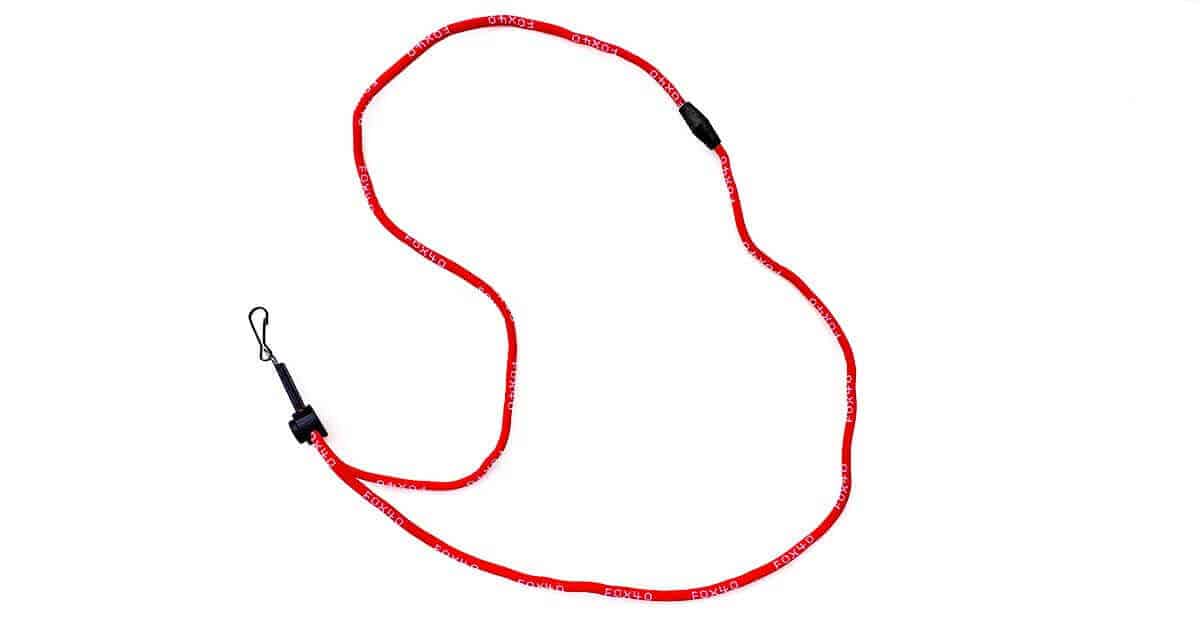
Breakaway lanyards have a safety connector that releases under pressure. It is potentially life-threatening to get caught on limbs or debris especially in water. The breakaway protection feature prevents the risk of strangulation and drowning when the lanyard is worn around the neck or attached to a PFD.
If you wear your whistle around your neck make sure it is on a breakaway lanyard. I have a breakaway lanyard for each of my pealess whistles.
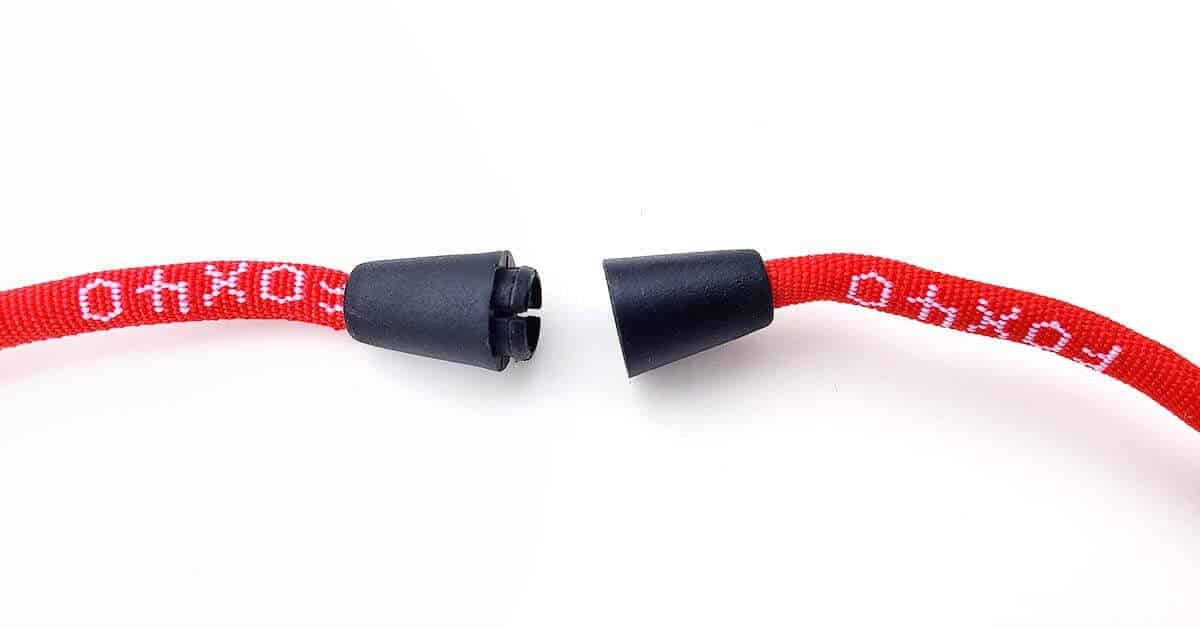
Do Regulations Require You to Have a Safety Whistle?
Boats of different lengths have different audible signaling requirements. State laws vary, but at a minimum, the federal U.S. Coast Guard requires all boats including manually propelled watercraft to have an efficient sound-producing device such as a whistle or horn that is audible for at least one-half mile.
As far as I can find, boating is the only outdoor activity that may legally require the use of a whistle or other sound-producing device. It all depends on where you are boating.
A whistle is not specifically required by the U.S. Coast Guard. You can use a horn instead, though a whistle is smaller and often less expensive.
For more information, see the Code of Federal Regulations, Title 33 CFR 83.33 – Equipment for sound signals (Rule 33) Document or Summary.
Some state agencies require whistles if you are in a manually propelled watercraft such as a kayak, canoes, raft, SUP, fishing float tube, personal pontoon, rowboat, river float tube, and other paddle craft. See your local agencies for details in your area.
Though, why would you really care if it’s the law or not? A safety whistle is a small, light, safety device that can save your life and that of others.
No brainer. Keep one with you on the water.
What Is the Best Safety Whistle?
Fox 40 whistles are my choice for the best safety whistle, though the best emergency whistle is always the one with you in time of emergency. Yes, some whistles are louder than others but the advertised distance of sound travel is reported as being roughly the same between whistles of 100db and 120db.
Why Are Fox 40 Whistles the Best Safety Whistle?
- Fox 40 developed the pealess whistle design.
- They are used by rescue professionals around the world.
- They never fail.
- They always work even if they have gotten wet.
- They cannot be overblown.
- Fox 40 has some crazy loud whistles.
- There are many styles and colors to choose from.
- The company has been around a long time.
- They save lives.
Where Should You Keep Your Safety Whistle?
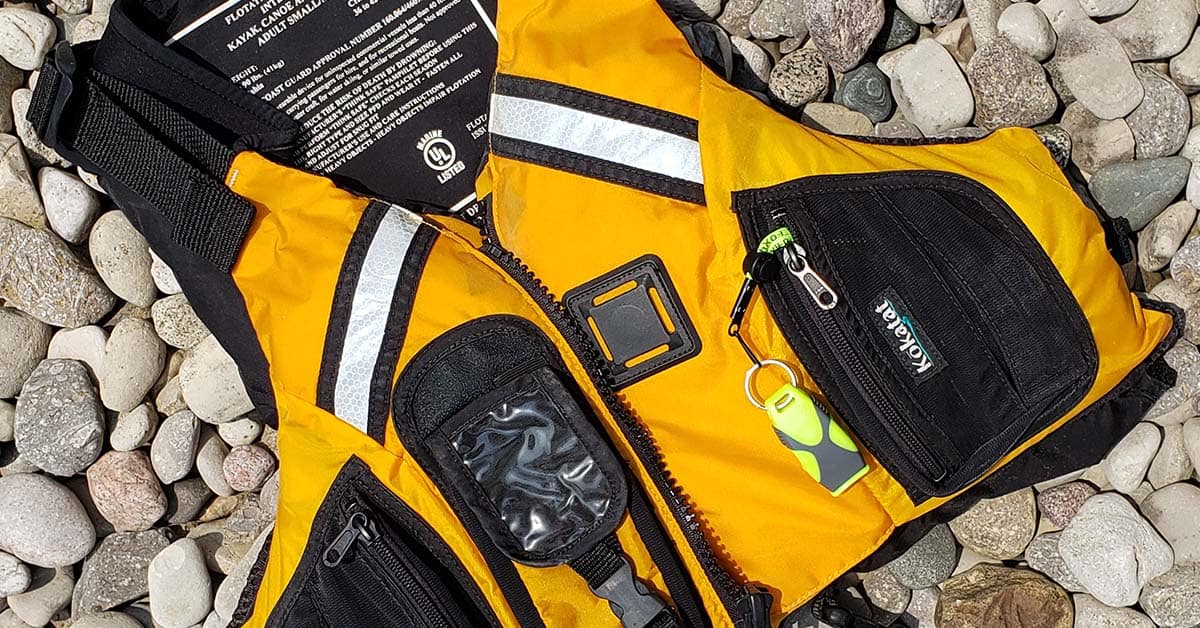
Where you keep your safety whistle will vary depending on which outdoor activity you are into at the time. Kayaking will be different from hiking, right? Here’s a rundown of a few possibilities…
- Put a safety whistle on a breakaway lanyard and wear it around your neck.
- Attach a whistle to your PFD.
- Attach it to your backpack.
- On the loop of a water bottle.
- In emergency survival kits. Include one whistle per person for which the kit is designed to protect.
- In your vehicle.
- On your diving gear.
- On your keychain for personal safety.
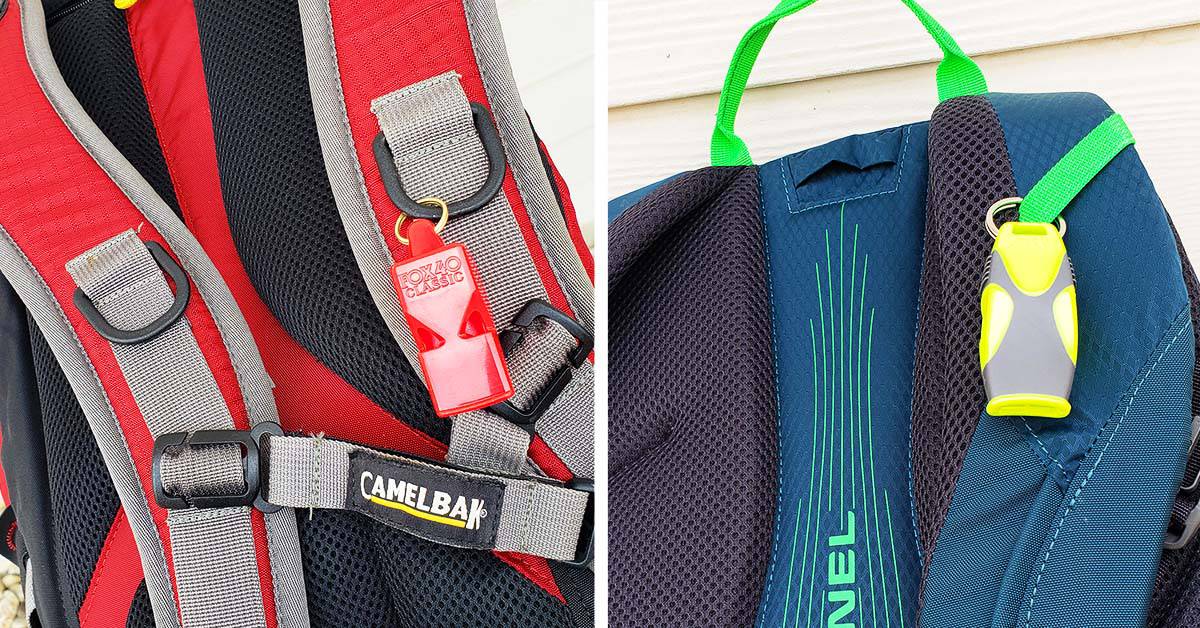
Conclusion
Be safe and prepared for emergencies by equipping yourself and everyone in your party with a safety whistle. This will help protect each of you and provide a form of communication in case anyone is separated or lost.
Whistles are inexpensive. Buy a number of them instead of trying to share them between outdoor activities. You will end up forgetting them at some point if you don’t.
I have one on my PFD, one on my backpack, one in each of my vehicles, and in all of my emergency kits.
You don’t want to be caught without a whistle when you need one. They are the least expensive lifesaving devices out there.

